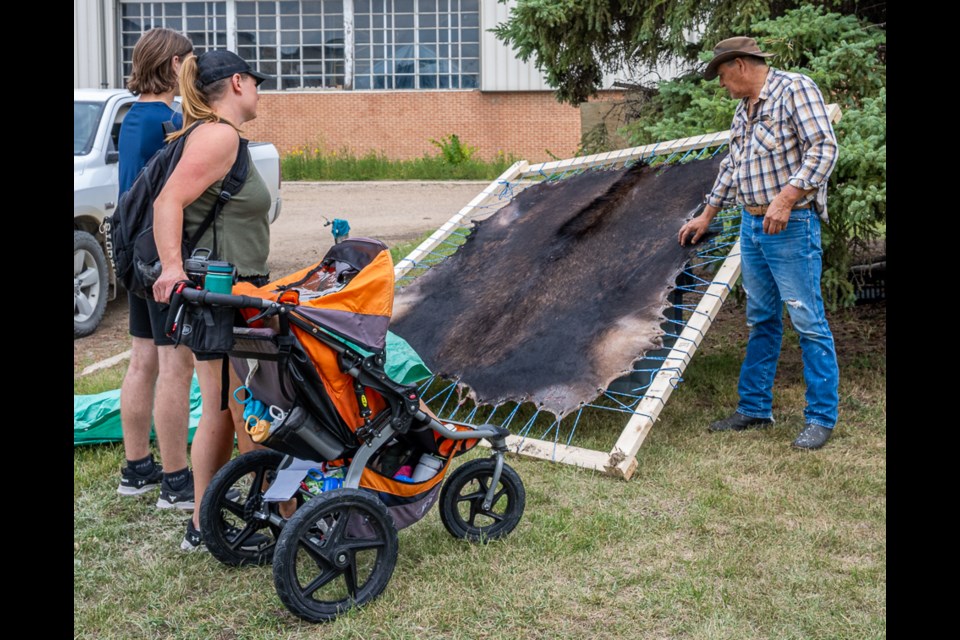NORTH BATTLEFORD — From July 28 – Aug 1, Fred Bill, a Knowledge Keeper from Chitek Lake, and Shirleyann Thunderchild, Knowledge Keeper from Thunderchild First Nation, demonstrated a traditional Cree method of tanning moosehide at the Western Development Museum.
The process begins with soaking the moosehide for a few days. Once soaked, it is stretched tightly on a wooden frame. A tool called a “flesher” is then used to scrape off the meat. Fred Bill’s flesher was made by his grandfather from an old iron bed frame and passed down from his grandmother. Fred grew up around hide tanning. As a young boy, he helped by hauling water from the slough. “Now a days it is so easy. You just turn on the hose,” he said.
After drying in the sun, the next step is to remove the hair using a tool called a “scraper.” In Cree, these tools have their own names, but Fred uses simplified English terms when teaching.
The next stage is called the “Cardboard Stage.” At this point, the hide is oiled with a softening oil and then soaked again. Traditionally, brain oil from the animal was used. To soften the hide, Fred uses an old wringer-washer from the 1960s to agitate the water, a process that used to be done by hand.
After that, the hide is “fluffed” by scraping it back and forth over a dull iron blade mounted to a tree. This step helps to make the entire hide soft. If not done evenly, parts of the hide can become stiff and unusable.
Any holes in the hide are sewn shut before drying. Holes left open will turn black during smoking. Shirleyann and Fred pull the hide tight while it dries and afterwards trim the edges. At this point, the hide is called “rawhide”.
Next is the smoking stage. The hide is folded into a tube shape, and a canvas skirt is attached to protect it from direct heat. It is hung over a smoldering fire made with spruce. The fire should not have open flames—only smoke. The smoke turns the hide brown and makes it waterproof. Care is taken to avoid ash touching the hide.
After smoking, the hide is fluffed one final time to ensure it is soft throughout.
When finished, the hide can be used to make moccasins, hand drums, gloves, jackets, vests, caps, or rattles. These two hides are being sent to New Mexico for a First Nations market. Shirleyann’s son will deliver them.
Fred Bill’s finished hides are well known and in high demand across North America.
The next Tipi Teachings will be about choke cherry prepping at the Western Development Museum Aug.12 – 14 from 1 to 3 p.m.




